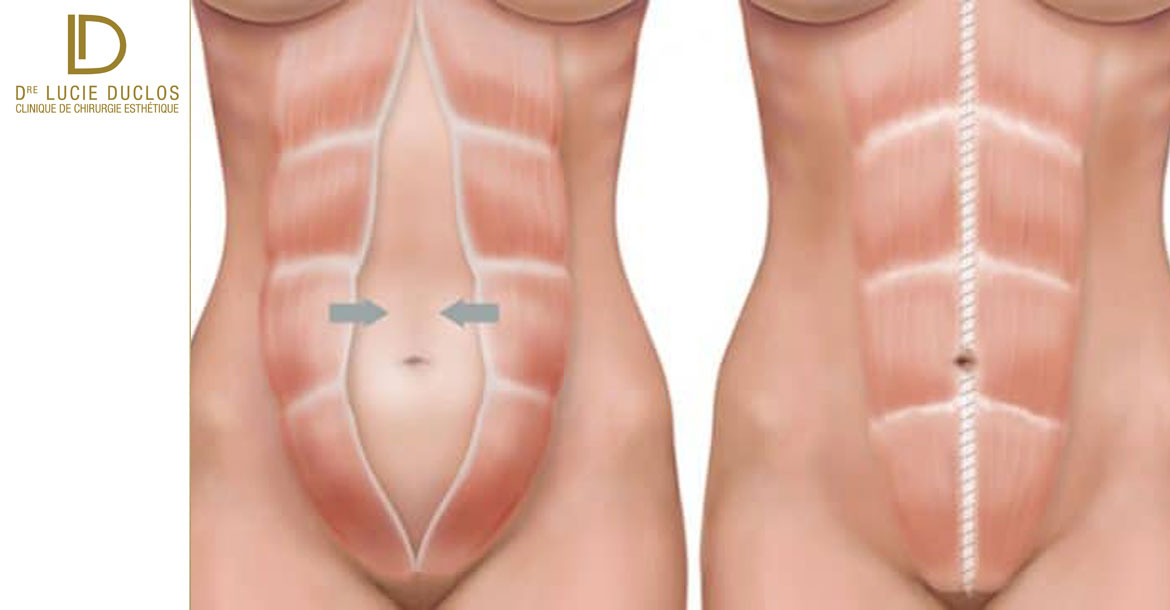What is rectus diastasis?
Diastasis rectus abdominis, also called diastasis recti, is a condition in which the rectus abdominal muscles separate along the midline of the abdomen. This creates a space or gap between the muscles, which can give the appearance of a hollow or bulging stomach.
Diastasis occurs when there is relaxation of the abdominal wall, the muscles are weak due to lack of training or following trauma or surgery. Generally diastasis is caused by pregnancy especially a twin pregnancy, as the expansion of the uterus can create pressure on the abdominal muscles. However, diastasis can also occur in men and women who have never been pregnant. Other risk factors include significant weight gain, obesity, advanced age which can cause muscle weakness and abdominal wall distension. Physical activities that overuse the abdominal muscles can also cause diastasis.
Symptoms of rectus diastasis
There are several reasons why a person may choose to have rectus diastasis surgery:
Why is it necessary to have rectus diastasis surgery?
- Reduce symptoms: Diastasis rectus can cause chronic pain in the abdominal area, posture problems and muscle weakness. Surgery can help reduce these symptoms by repairing weakened abdominal muscles.
- Improve Appearance: Diastasis rectus can also cause the abdominal wall to bulge or protrude, giving the appearance of a “buoy” belly. Surgery can help flatten the stomach and improve the overall appearance of the abdominal area.
- Restore abdominal function: Diastasis rectus can weaken the abdominal muscles, which can impact the person’s ability to perform daily movements and activities. Surgery can help restore strength and function to the abdominal muscles.
- Repair damage caused during multiple pregnancies: Diastasis recti is common after pregnancy, especially after multiple pregnancies. Surgery can help repair damage to abdominal muscles during pregnancy.
Diastasis treatment of the rectus abdominis is usually performed during an abdominoplasty.
How is rectus diastasis surgery carried out?
The surgical procedure to correct diastasis recti is performed under general anesthesia and may require hospitalization for a few days. Here is how the rectus diastasis treatment generally takes place in surgery:
- 1. Preparation: The patient is prepared in the operating room, and the anesthesiologist administers general anesthesia to ensure comfort and freedom from pain during the procedure.
- 2. Incisions: the surgeon makes incisions on the abdominal wall, usually horizontally above the pubis. The size and location of the incisions may vary depending on the specific needs of the patient.
- 3. Muscle repair: Once the incisions are made, the surgeon identifies the rectus abdominis muscles and brings them together using sutures or stitches. This step helps reduce the gap and strengthen the muscles.
- 4. Excess skin: If necessary, the surgeon can also remove excess skin and fat from the abdominal wall to achieve a smoother, toned contour.
- 5. Closing the incisions: Once muscle repair and removal of excess skin is complete, the surgeon closes the incisions using sutures or surgical staples.
- 6. Recovery: after surgery, the patient is monitored in the recovery room to ensure their stability. Pain medications may be given to ease post-operative discomfort.
- 7. Postoperative Care: The patient is usually encouraged to rest and recover at home for several weeks after surgery. Follow-up consultations are planned to check the condition of the incisions and to assess the progress of healing.
It is important to note that each patient is unique and the procedure may vary depending on individual needs. It is therefore essential to consult Dr. Duclos for specific information on the procedure and postoperative care. Diastasis rectus surgery is generally considered a cosmetic procedure and is not always covered by health insurance.
In some cases, specific rehabilitation exercises can help reduce the space between muscles and strengthen the abdominal wall. In more severe cases or if symptoms persist, surgery may be necessary to repair the abdominal muscles.


